The wooden casks are so dark they are almost black, the same color as the precious liquid contained inside, which has so thoroughly saturated the wood it seems to be now seeping into the air, filling the entire room with a viscous quality and a heady aroma. Sweet and acidic, it is a scent that expresses the essence of the place and the passage of time as much as it does the product itself: balsamic vinegar.
In Italy it is known as aceto balsamico, and the best of it is given its very own room—an acetaia—where it is carefully aged in wooden casks. There are a small group of us crowded in this particular acetaia listening as Claudio Stefani Giusti explains the history of the casks around us, which have been in his family’s possession for seventeen generations.
Seventeen generations. He says this as if it were the most natural thing in the world, yet it seems unfathomable to me. Beyond three or so generations, my family tree is mostly a mystery. But unlike mine, the Giusti family did not emigrate from Italy to America; instead, they have remained firmly rooted in the small town of Modena for hundreds of years.
Acetaia Giusti was founded in 1605 and has continuously maintained its acetaia, making it the world’s oldest producer of balsamic vinegar. Claudio, as the CEO of Acetaia Giusti, is currently in charge of carrying on his family’s legacy, a responsibility he approaches with a conscientious balance between respect for tradition and interest in innovation. Under his direction, Acetaia Giusti expanded into a new location in 2018 just down the road from the original acetaia, where visitors can enjoy guided tastings and tour a museum devoted to the history of balsamic vinegar. This year also marked the release of a new Acetaia Giusti product: vermouth.

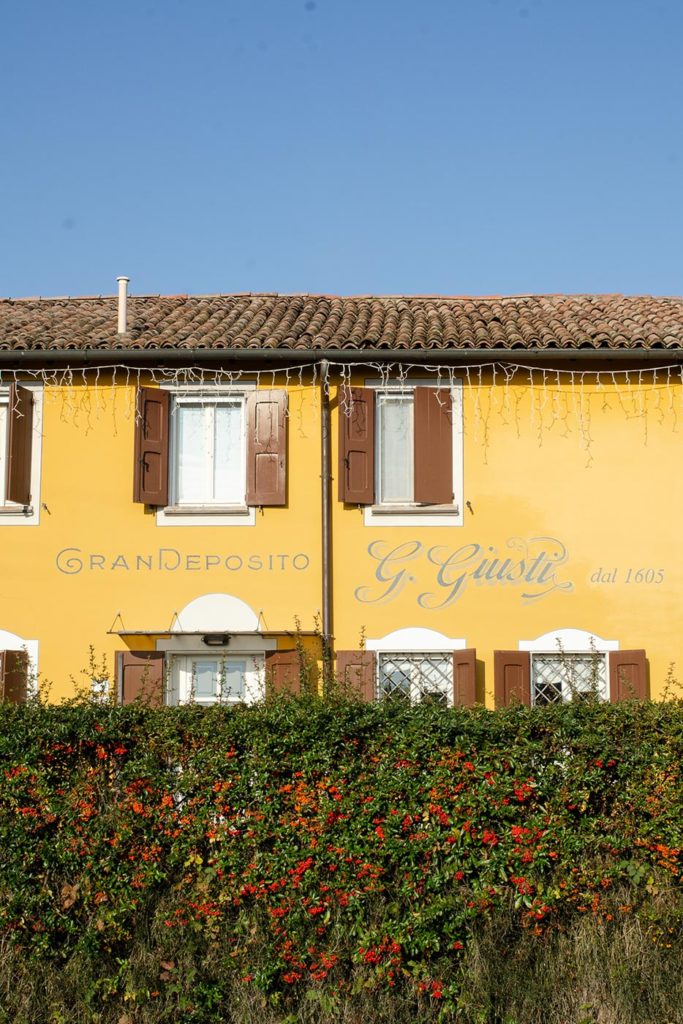
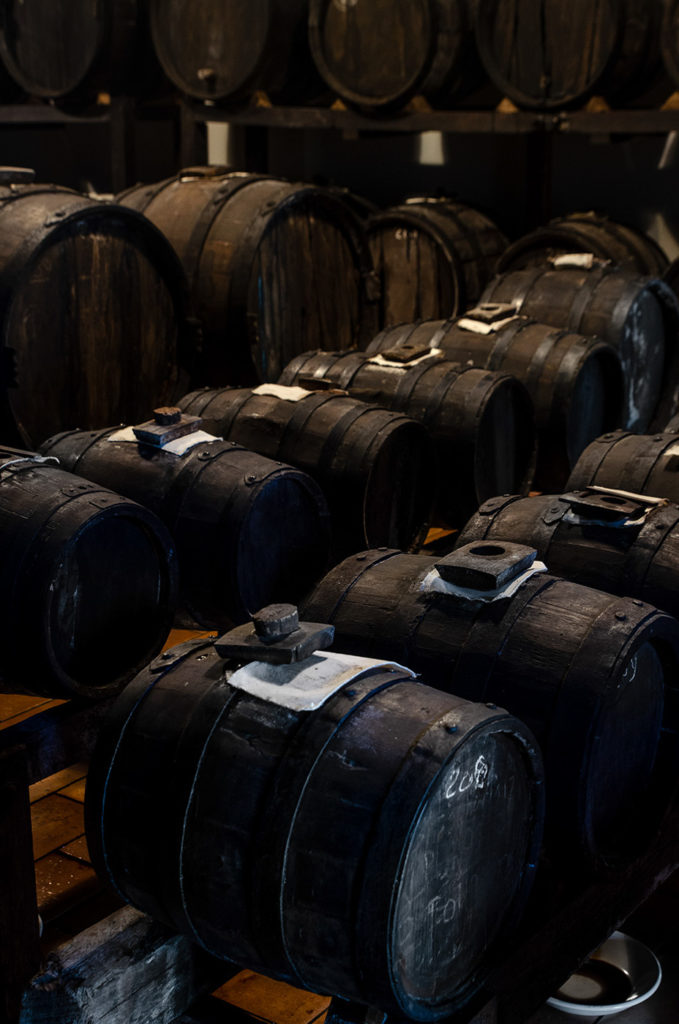
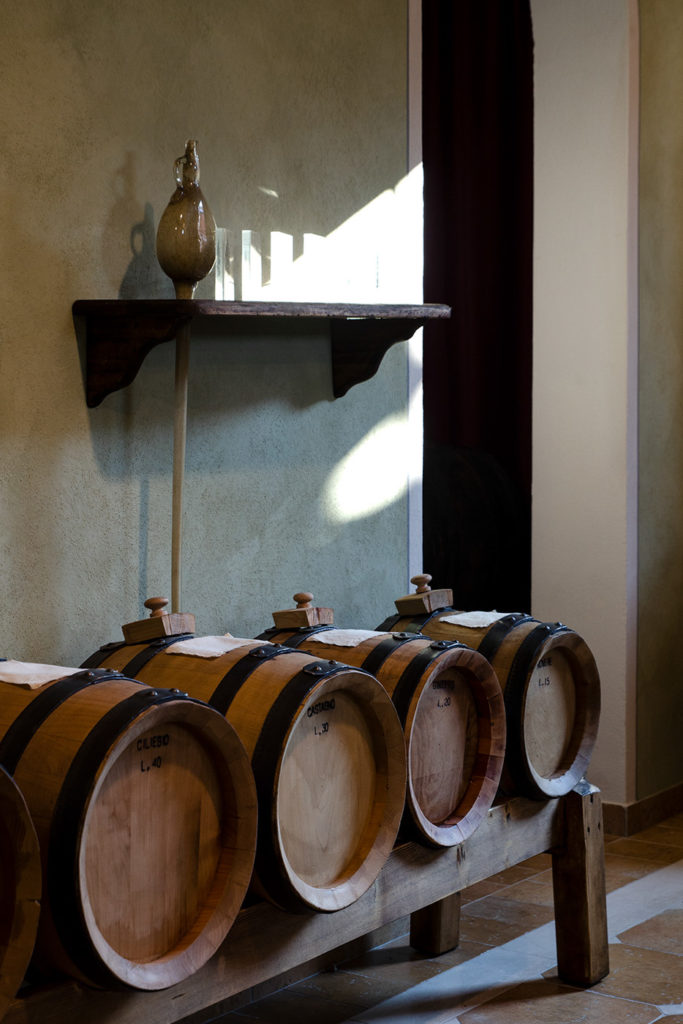
The decision to begin producing vermouth is closely aligned with the values and practices that have guided the Giusti family for centuries. The unifying factor has always been, and continues to be, the casks. Most of the casks still in use in the acetaia today were first built and filled with balsamic vinegar during the 1700s and 1800s; however, the family does have some casks that are close to four hundred years old. Given the fact the Italian unification occurred in 1861, this means the majority of the Giusti casks came into existence before Italy itself.
In the Emilia Romagna region, balsamic vinegar casks are connected to the most sacred of family traditions. A new series of casks may be created for the birth of a child, while those that have experienced many years in an acetaia may be offered as a wedding gift. As generations of Giusti family members have come and gone over the centuries, these vessels have provided an element of constancy, acting as sentinels for the safekeeping of the family heritage.
The balsamic vinegar production process at Acetaia Giusti has remained largely unchanged since the company was founded. It starts in autumn with the harvesting of two varieties of grapes, Lambrusco and Trebbiano, from nearby vineyards. The grapes are then combined and cooked for hours until a dark, dense and deeply sweet liquid develops. When this liquid (called saba or mosto cotto) is transferred into the casks, the magic truly begins.
High quality balsamic vinegar is not aged in just one cask; it must pass through a series of them, called a batteria. The aging process starts in a large cask made from the wood of a mulberry tree. After one year, a portion of the balsamic vinegar is transferred to a smaller cask made from a different kind of wood. The balsamic vinegar will pass through casks made of chestnut, cherry, ash, oak and juniper wood over the course of several years, until it finishes the aging process in a charmingly petite oak cask. It is only from this that the balsamic vinegar can be extracted to be bottled and sold. However, this one is never fully emptied and continues as a part of the batteria indefinitely.
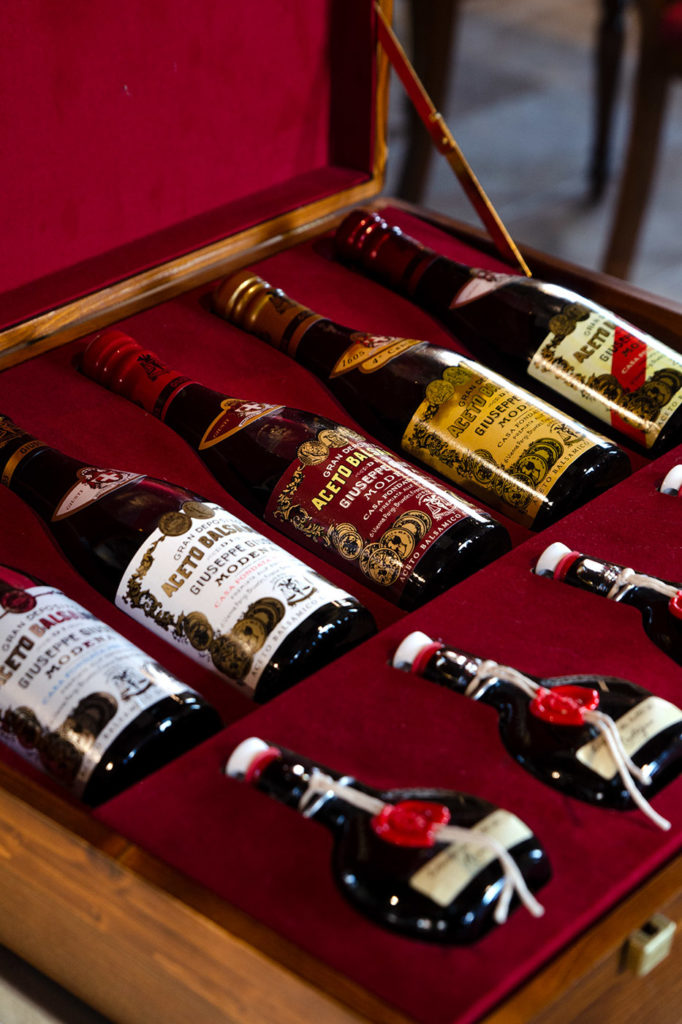

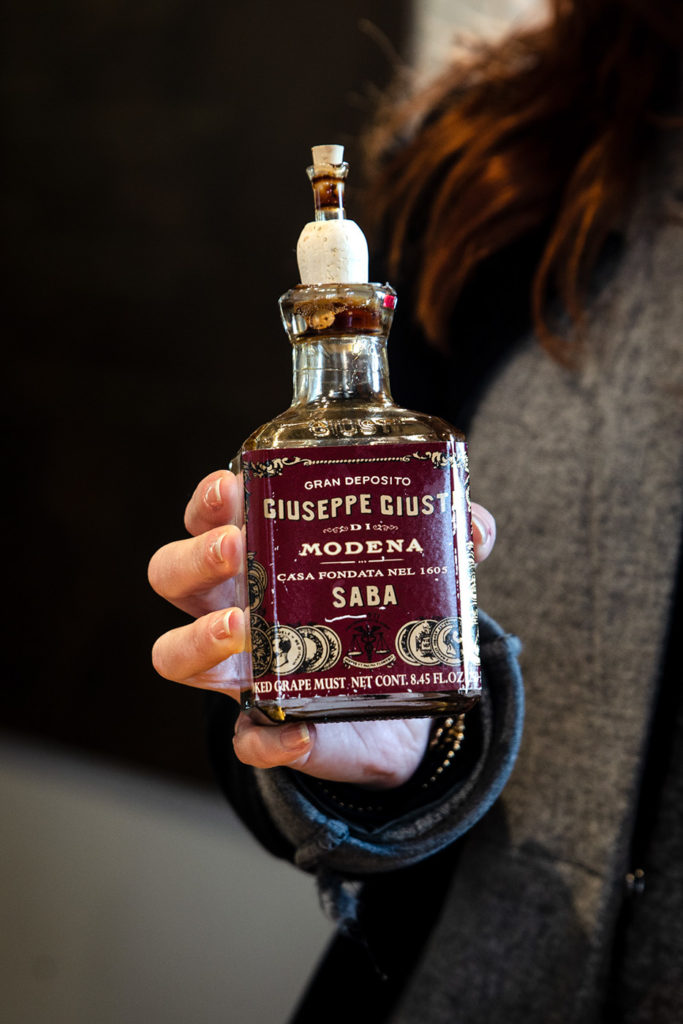
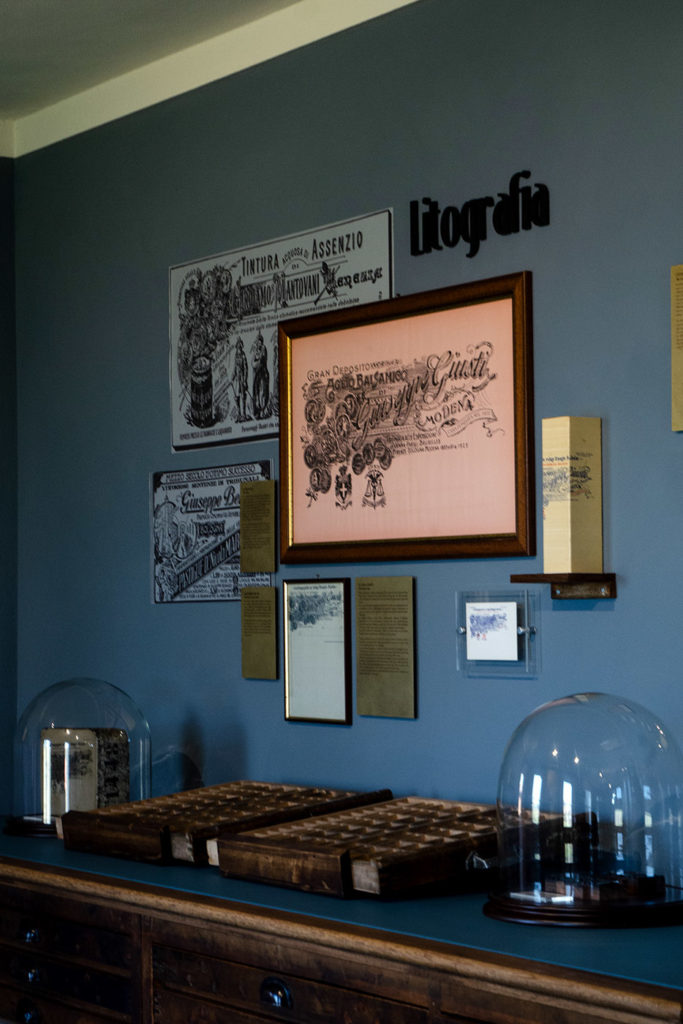
Throughout the aging process, the balsamic vinegar is meticulously monitored by assaggiatori, professionals trained in the art of tasting balsamic vinegar. There are four key phases of the tasting process: the visiva phase, in which the assaggiatore assesses the visual aspect of the balsamic vinegar, including its color and thickness; the olfattiva phase, in which he or she defines the various aromas of the balsamic vinegar; the gustativa phase, in which taste is analyzed; and finally, the retrogustativa phase, wherein these professionals judge the after-taste of the balsamic vinegar.
Following the tour of the acetaia, Claudio guides us through the assaggiatore experience with a tasting of several balsamic vinegars. According to tradition, we taste the vinegars in a sequence determined by how long they have been aged, beginning with the youngest of the balsamic vinegars. Claudio adds the balsamic vinegars are organized in order of quality senza vergogna, without shame. “One is better than the other and you don’t have the right to express your opinions. You can say, ‘I like the first one best.’ Fine, but you’re wrong,” he says. “It’s not that the youngest balsamic vinegar has defects; it’s just too simple in comparison with the flavors of the older balsamic vinegars.”
The vinegars are classified by a strict system of regulations governed by the European Union that is concerned first and foremost with where they are produced and how long it is aged. Authentic balsamic vinegar can be made in just two Italian towns: Modena and Reggio Emilia. To be recognized as a traditional balsamic vinegar with Denominazione di Origine Protteta (Protected Designation of Origin) certification, Acetaia Giusti has to follow specific rules throughout the production process, including aging for at least twelve years or twenty-five years, depending on the variety. During the tasting, we try several kinds—some aged for a few months, others for a few decades—and lastly, a special treat, balsamic vinegar aged for more than a century.
Claudio doles out drops of balsamic vinegar like black pearls, placed with elegant expertise and surprising speed in the shallow curves of our tiny spoons. For himself, he dabs a drop on the back of his hand, just above his thumb, tasting from his own skin rather than a spoon.
As we progress through the tasting, the flavors become increasingly complex; the sweeter flavors, like cooked plum, give way to more acidic elements, such as cacao. Someone even identifies notes of “bacon americano.” We discuss pairings and it seems there isn’t anything in the world, sweet or savory, that wouldn’t benefit from a drizzle of balsamic vinegar—alcohol included. In recent years, a number of adventurous Italian mixologists have experimented with balsamic vinegar in cocktails. When bartenders began requesting bottles directly from Acetaia Giusti, Claudio saw an opportunity to transform a centuries-old tradition into something entirely new. In a historic first for the family (and apparently the beverage industry as a whole), he decided to use balsamic vinegar casks to age alcohol.
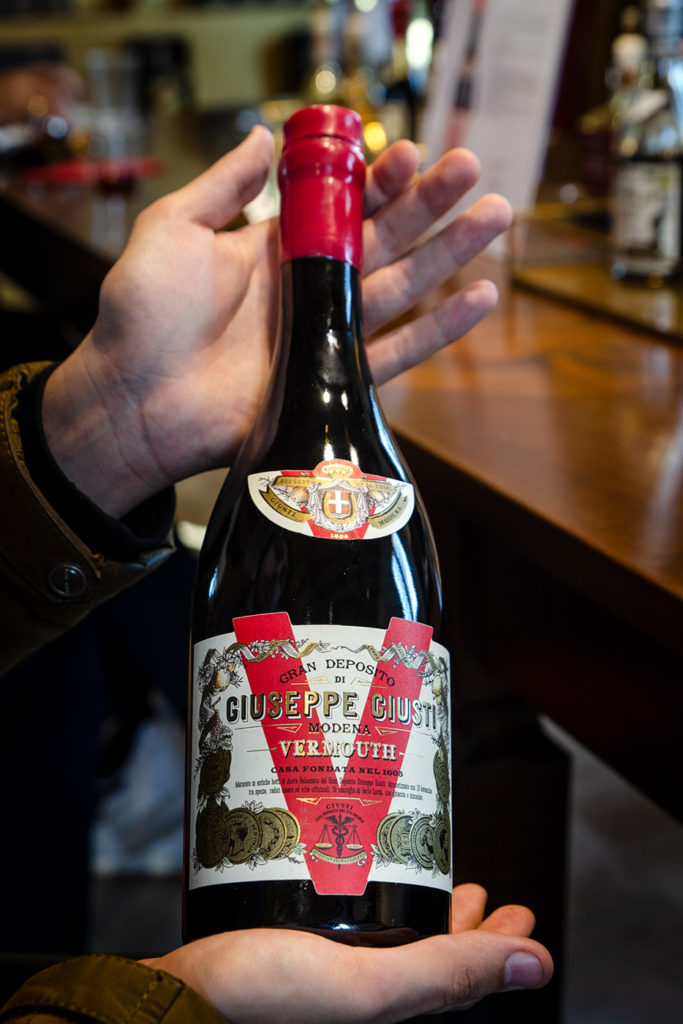
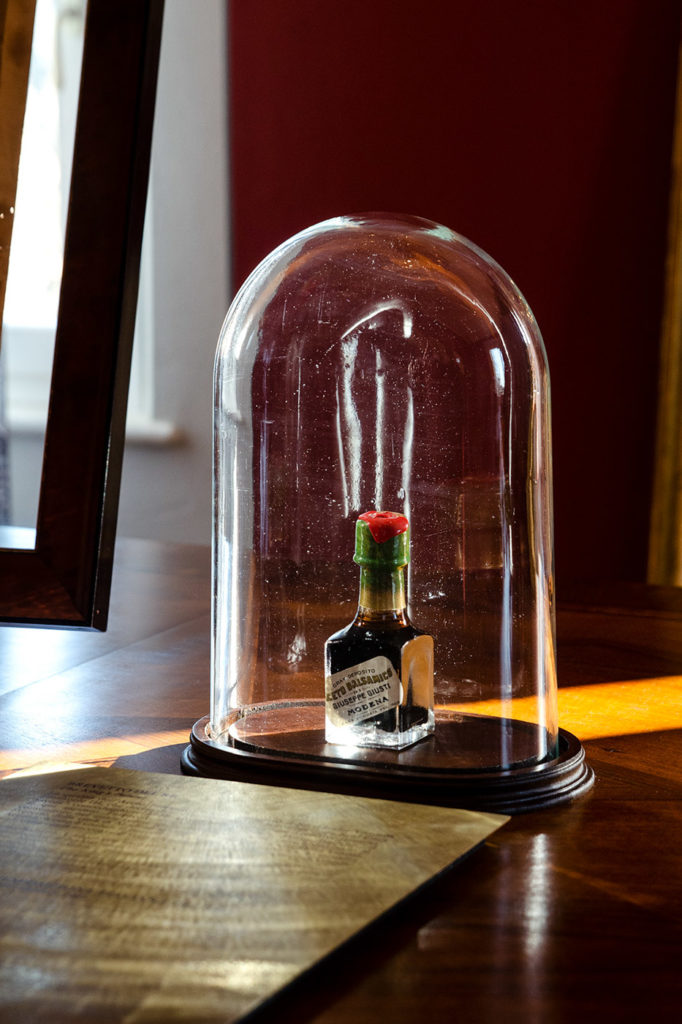
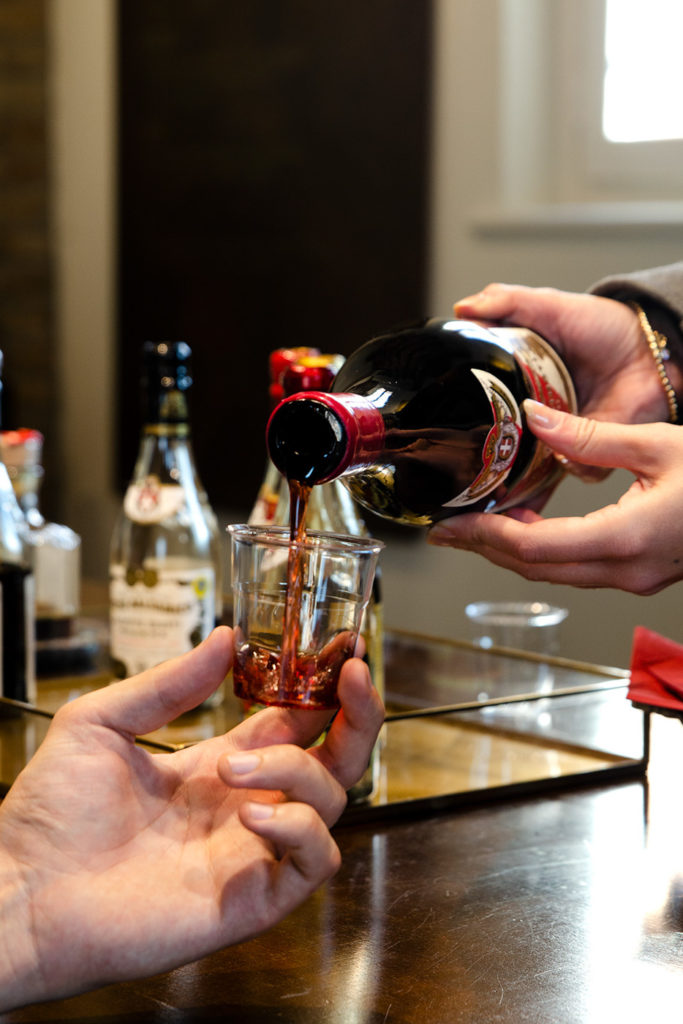
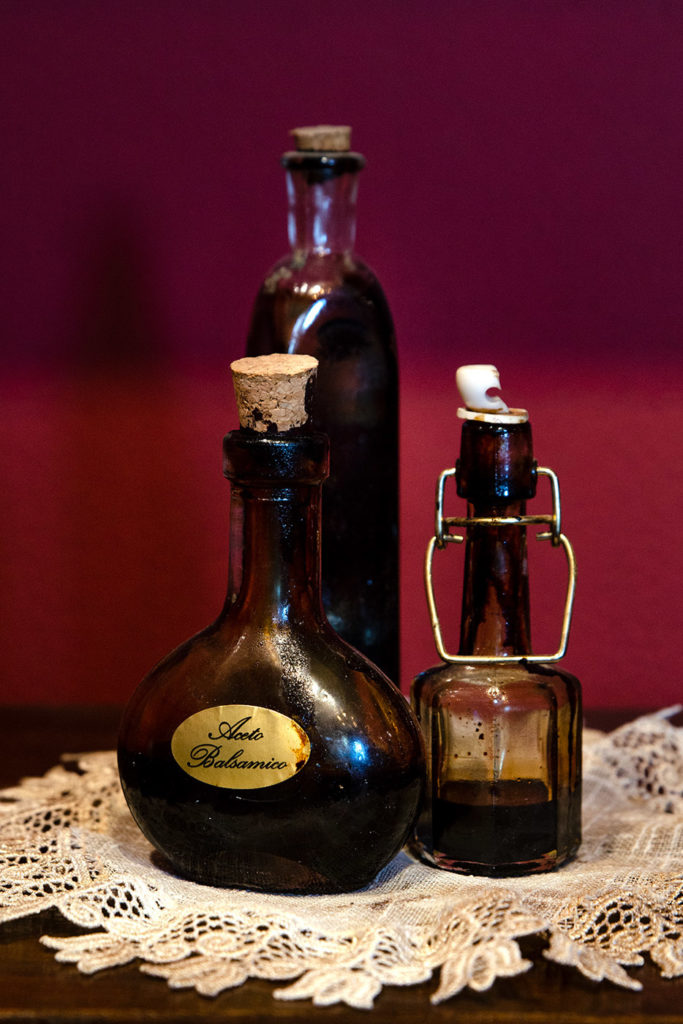
Amongst the numerous alcohols that can be aged in barrels, Claudio chose to produce vermouth for a variety of reasons, including its Italian heritage and its capacity to compliment the flavors of balsamic vinegar. Similar to the production of their balsamic vinegar, the Acetaia Giusti Vermouth is made from grapes grown in the Emilia Romagna region, however, the same system of regulations that requires balsamic vinegar to be produced in this region also requires vermouth to be produced in the Northern Italian region of Piedmont. For this reason, the wine produced from the Acetaia Giusti vineyards is sent to Turin to complete the distilling process. Once there, alcohol and sugar are added to the wine, along with saba and an elaborate mix of nineteen botanics, including thyme, rosemary, lavender, black pepper, marjoram, nutmeg and vanilla. These flavors are infused into the wine during a period of about six weeks. The liquid is then transported back to Modena, where it is aged for four months in balsamic vinegar casks made of oak wood.
When I first visited Acetaia Giusti in October of this year, the vermouth had not yet finished the aging process. It was with great anticipation that I found myself seated in the Giusti tasting room again two months later with a bottle in front of me.
Although the product is brand new, the Acetaia Giusti Vermouth tells a centuries-old story, and this rich history is apparent from the moment you set your eyes on the bottle. Claudio wanted the vermouth labeling to echo the Acetaia Giusti aesthetic, so he worked with a team of typographers to design a label stylistically inspired by the letterpress system used during the nineteenth century to create the labels that still grace their balsamic vinegar bottles today. The vermouth label is printed on a background the off-white color of antique documents, with gold foil embellishments that recall the abundant awards attributed to the Giusti family for their balsamic vinegars, and striking red accents to match the old-fashioned wax seal that caps the bottle.
The vermouth itself is garnet-colored and highly aromatic. With the very first sip, I fall in love. As I continue to drink, the many layers of flavors are revealed; the initial sensation of sweetness and acidity becomes enhanced by earthier notes, bitterness and warm spices. The taste is a culmination of seventeen generations, four hundred years, nineteen botanics, and a round-trip journey from Modena to Turin. I am told it makes for an extraordinary negroni, but when I arrive home later that day, I enjoy my vermouth neat with a silent toast to the casks of Acetaia Giusti.





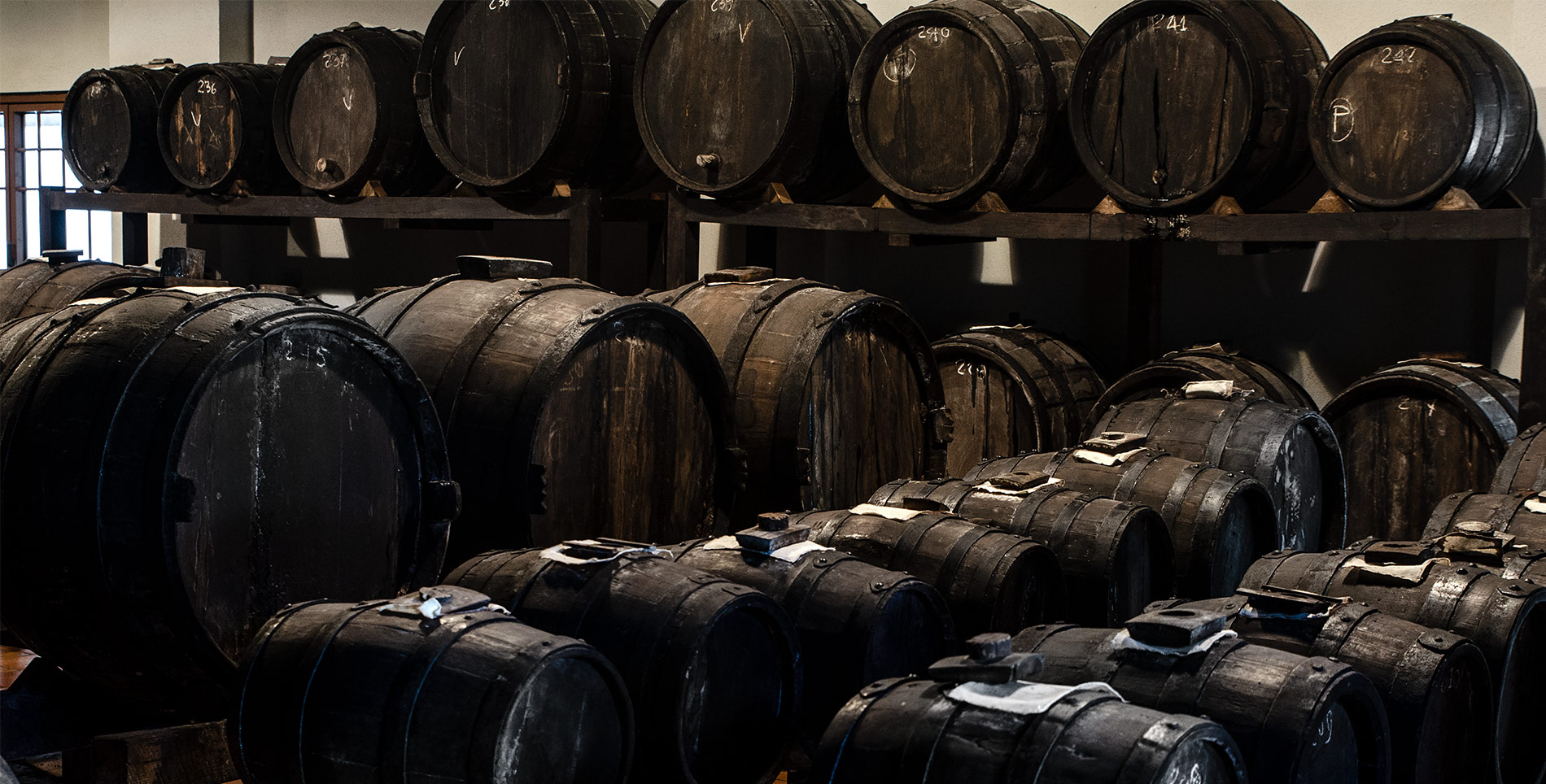

Our comments section is for members only.
Join today to gain exclusive access.